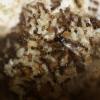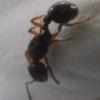I have a camponotus queen that bore one worker and laid about about 15 eggs. Most of the eggs turned to larvae, but they don't appear to have continued to grow since then (over the last 6 weeks).
Her and her single worker seem sluggish, hardly ever moving. She even fell over on her back when I moved the test tube slightly and was on her back for a good 10 seconds before she righted herself, like she's moving in slow motion.
They aren't eating any food I've given them since the worker arrived either.
The suggestion I got from a Facebook ant group was to hibernate them, so that's what I plan on doing--putting them in a cool dark place, only checking on them to make sure they have water.
My question is about these eggs and larvae. What happens to them during hibernation? Will they die? Will they grow? Will they stay in a stasis of sorts, and begin growing again once she's out of hibernation?
Edited by prettycode, September 25 2015 - 12:13 PM.





















